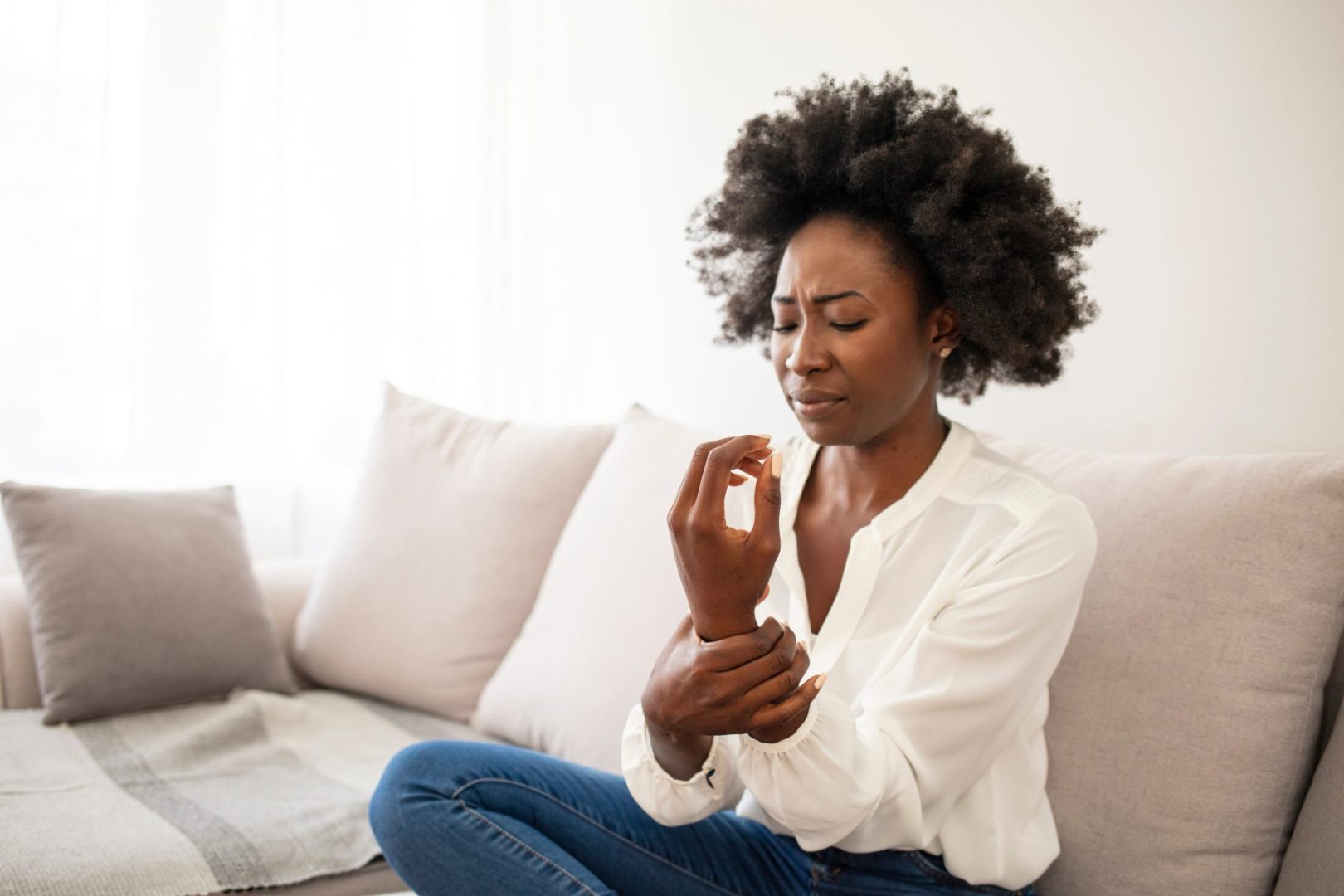You’ve spotted another unexplained purple blotch on your thigh. Or maybe you’ve noticed your shins look like a connect-the-dots puzzle of bruises in various healing stages. If you’re constantly wondering “where did that come from?” about the latest addition to your collection of mysterious marks, you’re not alone. Frequent unexplained bruising affects millions of people, yet most dismiss it as clumsiness or sensitive skin without investigating further.
While occasional bruises are perfectly normal, a sudden increase in bruising or bruises that appear without apparent injury might be your body’s way of flagging something that needs attention. These mysterious marks can sometimes reveal surprising things about your health that have nothing to do with bumping into furniture in the middle of the night.
The aging factor nobody warns you about
That increased tendency to bruise as you get older isn’t just your imagination. As we age, several changes converge to make bruising more likely, even from minor bumps you wouldn’t have noticed in your twenties.
The skin itself undergoes significant changes with age. The layer of fat that once cushioned blood vessels against impact gradually thins, while the skin becomes less elastic and more fragile. This combination means blood vessels have less protection and are more likely to break under pressure that younger skin would easily absorb.
Simultaneously, the tiny blood vessels just beneath your skin become increasingly fragile over time. Their walls thin and lose structural integrity, making them more prone to rupture from minor trauma. This vessel fragility explains why many older adults develop bruises from pressure that wouldn’t have left a mark in their youth.
What’s particularly interesting is how this age-related bruising follows distinctive patterns. The classic locations – backs of hands, forearms, and shins – reflect areas where blood vessels naturally sit closer to the skin surface and have less cushioning protection. If you’re noticing bruises predominantly in these areas, age-related changes might be the primary factor rather than an underlying health concern.
The medication connection most people miss
Your medicine cabinet might hold the explanation for those mysterious bruises. Several common medications significantly increase bruising susceptibility through effects on blood vessels or clotting mechanisms – often without patients making the connection.
Blood thinners like aspirin, warfarin, and newer direct oral anticoagulants intentionally interfere with clotting to prevent dangerous blood clots. This beneficial effect comes with a trade-off – even minor bumps that would normally cause no visible injury might now result in noticeable bruising. What’s less widely recognized is that many people take daily low-dose aspirin without considering it “medication” or connecting it to their increased bruising.
Surprisingly, many medications without obvious blood-thinning properties can still promote bruising. Certain antidepressants, particularly SSRIs, affect platelet function as a side effect. Corticosteroids, whether taken orally for conditions like asthma or applied topically for skin issues, thin the skin and weaken blood vessel walls over time, creating the perfect conditions for easy bruising.
Even some antibiotics can temporarily affect how well your blood clots, creating a window of increased bruising susceptibility that disappears after completing your prescription. This temporary nature often prevents people from connecting the medication to their suddenly improved bruising situation.
The workout factor athletes overlook
That post-exercise bruising might not be from an injury you don’t remember. Intense physical activity, particularly weight training or high-impact exercises, can cause microscopic blood vessel damage that manifests as bruising – even without obvious trauma.
During vigorous exercise, blood flow increases dramatically to working muscles, placing pressure on capillaries. The physical strain of muscle contraction against resistance can rupture tiny vessels near the skin surface, creating what exercise physiologists call “exercise-induced purpura” – patches of bruise-like discoloration that appear after workouts.
This phenomenon explains why weightlifters often notice unexplained bruising along muscle bellies after particularly intense training sessions, or why runners develop bruised toes without stubbing them. The discoloration follows predictable patterns based on which muscle groups were worked hardest.
The fascinating aspect is how the body adapts to this stress over time. Regular exercisers often notice this exercise-induced bruising decreases as their vascular system strengthens in response to consistent training. However, suddenly increasing workout intensity or adding new exercise types can temporarily bring back the bruising until adaptation occurs.
The surprising nutrient deficiencies
Your dietary choices might be painting those bruises on your skin. Several key nutrients play crucial roles in maintaining blood vessel integrity and proper clotting function – their absence creates the perfect conditions for unexplained bruising.
Vitamin C deficiency represents the classic connection between nutrition and bruising. This vitamin is essential for producing collagen, the protein that gives strength and structure to blood vessel walls. Without adequate vitamin C, vessels become fragile and prone to rupture from minimal pressure. While full-blown scurvy is rare today, mild vitamin C insufficiency is surprisingly common, particularly among those who consume few fruits and vegetables.
Vitamin K plays an equally important role in the clotting process. Low levels mean your blood takes longer to clot when vessels are damaged, allowing more blood to leak before the breach is sealed. This deficiency often flies under the radar because standard blood tests don’t routinely check vitamin K status, and many people don’t consume enough dark leafy greens and fermented foods that provide this nutrient.
Perhaps most surprisingly, protein insufficiency significantly impacts bruising susceptibility. Building and maintaining strong blood vessel walls requires adequate protein intake. This connection explains why unexplained bruising sometimes accompanies drastic weight loss attempts, particularly those involving severe calorie restriction or elimination of protein-rich food groups.
The autoimmune surprise hiding in plain sight
Unexplained bruising sometimes signals autoimmune activity lurking beneath the surface. Several autoimmune conditions can target components of the clotting system or blood vessels themselves, creating a tendency to bruise from minimal trauma.
Immune thrombocytopenia (ITP) occurs when the immune system mistakenly attacks platelets – the tiny blood cell fragments essential for forming clots. As platelet numbers fall, bruising increases, often appearing as numerous small, pinpoint bruises alongside larger unexplained bruises. This condition can develop gradually, with increasing bruising frequency serving as one of the earliest noticeable symptoms.
Other autoimmune conditions like lupus and rheumatoid arthritis can cause vasculitis – inflammation of blood vessel walls that weakens them and increases bruising tendency. The distinguishing feature is often the appearance of the bruises themselves, which may look different from typical injury-related bruising, sometimes appearing as distinct raised patches or following unusual patterns.
What makes these autoimmune connections particularly important is that increased bruising might appear months or years before more recognizable symptoms of these conditions develop. Recognizing this early warning sign can lead to earlier diagnosis and intervention, potentially changing the disease course significantly.
The hormonal shifts that change everything
Hormonal fluctuations dramatically influence bruising patterns, creating windows of increased vulnerability that follow predictable cycles. These hormone-driven changes explain why bruising susceptibility isn’t constant but waxes and wanes over time.
Estrogen helps maintain blood vessel wall strength and elasticity. During periods of declining estrogen – whether monthly before menstruation, during perimenopause, or after menopause – blood vessels become temporarily more fragile. This hormonal pattern explains why many women notice cyclical changes in bruising tendency, with increased bruising during specific phases of their menstrual cycle.
The estrogen connection also helps explain why postmenopausal women experience dramatically increased bruising compared to age-matched men. Without estrogen’s protective effects, blood vessels become more vulnerable to even minor trauma. Hormone replacement therapy sometimes improves this bruising tendency, further confirming the hormonal link.
Cortisol, the body’s primary stress hormone, also influences bruising patterns when chronically elevated. Long-term high cortisol levels – whether from external stress, sleep deprivation, or certain medical conditions – weaken collagen formation in blood vessel walls. This weakening creates increased bruising susceptibility that resolves when cortisol levels normalize, connecting your stress levels directly to those mysterious marks.
The blood pressure puzzle piece
Your blood pressure readings might explain those unexplained bruises. Both chronically high and significantly low blood pressure create conditions that promote bruising through different mechanisms.
Hypertension puts constant stress on blood vessel walls, gradually weakening them over time. This weakening makes vessels more likely to rupture under minor pressure, particularly in areas with thin skin and minimal padding. The resulting bruises often appear in characteristic locations – backs of hands, forearms, and lower legs – where vessels naturally have less protection.
Conversely, low blood pressure creates a different bruising mechanism. When blood pressure drops significantly upon standing (orthostatic hypotension), the body compensates by constricting vessels to maintain blood flow to vital organs. This repeated constriction-dilation cycle stresses vessel walls over time, making them more fragile and prone to rupture.
What makes this connection particularly valuable is that blood pressure-related bruising often appears before more serious complications develop. Recognizing this early warning sign might prompt blood pressure evaluation and management before more significant problems arise.
Those mysterious bruises might be more than just cosmetic annoyances – they’re sometimes your body’s way of flagging issues that deserve attention. While occasional unexplained bruises happen to everyone, a pattern of increasing bruising frequency or bruises that appear without any remembered trauma might warrant a conversation with your healthcare provider, particularly if they’re accompanied by other subtle changes in your health.















